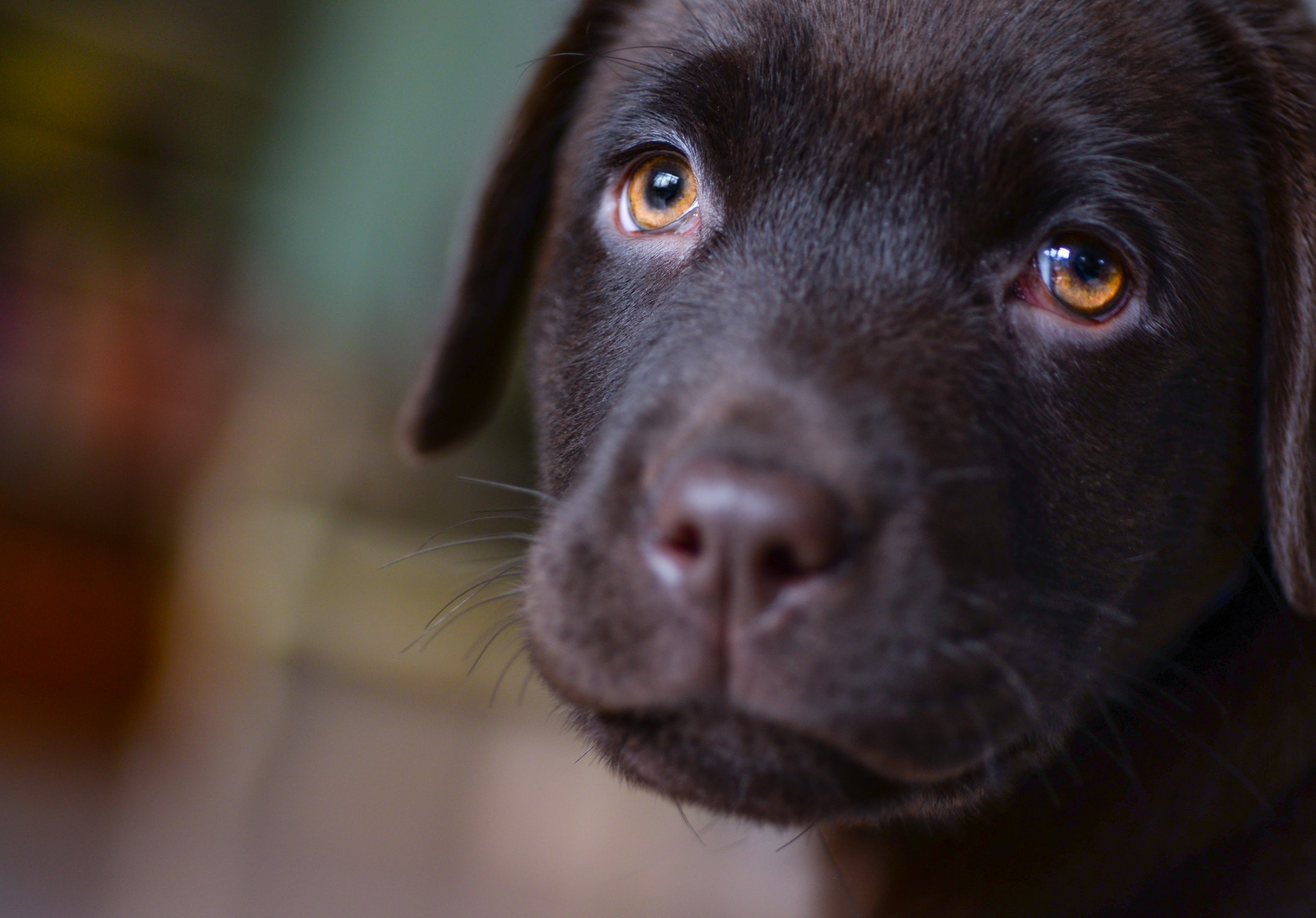
Thanks to their boundless energy and enthusiasm quite a few people worry about how to train a lab puppy effectively.
All breeds of puppies are sure to be little balls of chaos, but surely a Lab is going to be even more exasperating to train over the early months?
Not exactly!
Owners who follow a few tips and stick to a well planned and comparatively intensive training structure will find that Lab puppies can actually be a joy to train.
There are specifics to this breed that must be understood to ensure maximum success, but if these initial stages are performed well you will be rewarded with an obedient and loving member of the family.
Discover How To Train Your Puppy The Easy Way? Click Here To Access Over 250 Expert Puppy Training Videos
The Key Differences Between Training Labradors And Other Breeds
Labradors are working dogs.
Originally used by Newfoundland’s fishermen to retrieve their loose nets, they then became synonymous as ‘gun dogs’ for retrieving game such as pheasants, pigeons, and partridges.
As you will likely know, they are naturally fit being not just excellent swimmers but also capable of running at speed over long distances.
Their endurance means that they are full of energy making them great for families who spend plenty of time outdoors.
Thanks to their intelligence, loyalty, and amazing perception, black and yellow Labradors are the breed of choice for assistance purposes.
Brown/chocolate labs tend to be a little more hyperactive and tricky to control which is why it is rare to see this variety used in such contexts.
Each shade has its own merits but do consider this difference when deciding which is the most suitable for your family and environment.
Where Labs differ most from other breeds is the level of demand they require in their puppyhood.
Few other breeds come close to them when it comes to the importance of early socialization.
Poorly trained adult Labradors can develop behavioral problems that are extremely difficult to correct.
An appropriate analogy would be to consider training your Lab puppy as if you were building a house. Rock solid foundations will allow you to build a skyscraper but a crumbling/weak base will rarely pass the first story.
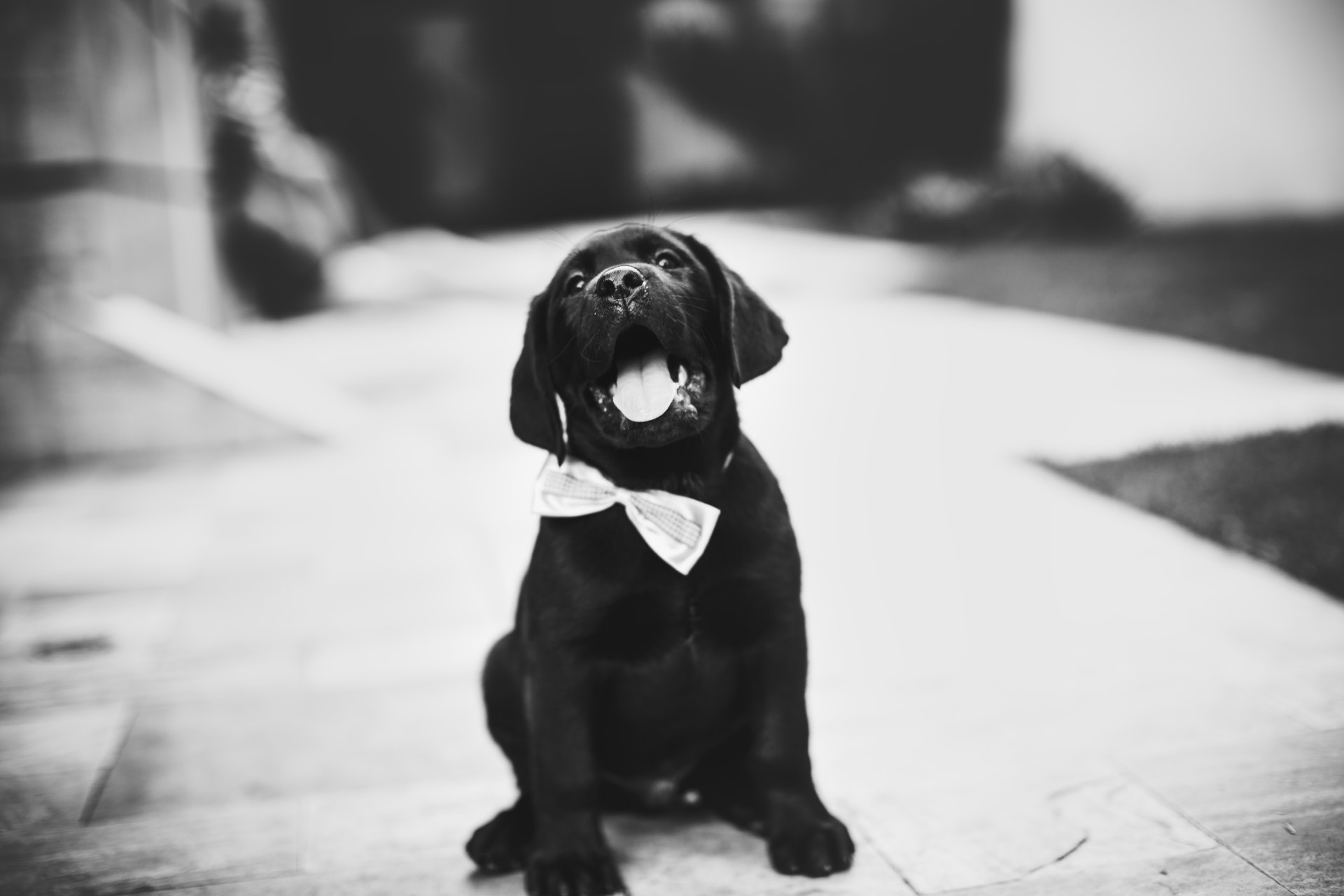
Are Labs Hard To Train?
Not necessarily difficult but they do require a great deal of investment and patience during their first year.
One of the reasons why Labs are the most popular gun dog is because they are ‘soft mouthed’.
This means they do not destroy the game when carrying it back to their owner.
However, this does also make them very liable to destructive chewing during puppyhood.
It is entirely natural from their perspective and a crucial part of their development is understanding texture and toughness.
But of course, it’s better for them to gnaw on approved toys instead of your favorite shoes…
One thing to be aware of and this cannot be stressed enough. Is that the best way to train a Lab puppy is based upon exercising what they are naturally ‘hardwired’ to perform.
They will play ‘stick’ for literally hours on end without breaking a sweat.
But do not expect Lab puppies to be naturally obedient to other commands.
Labs are not guard dogs. In fact, they tend to be among the least vocal breeds (necessary when hunting) and are prized for their independence.
So effective training needs to nurture their natural instincts while coaching general obedience.
As mentioned above brown Labs tend to be the more hyperactive and playful variety. Great as a family pet but need attention throughout the day!
One other tip to consider is that for some reason left-pawed Labs tend to be trickier to train than right-pawed.
Wondering how to tell?
Just watch the dog as it sets off from a sitting position. The first paw they place down will be their stronger side (just like humans about 9/10 are right inclined).
How To Train A Lab Puppy
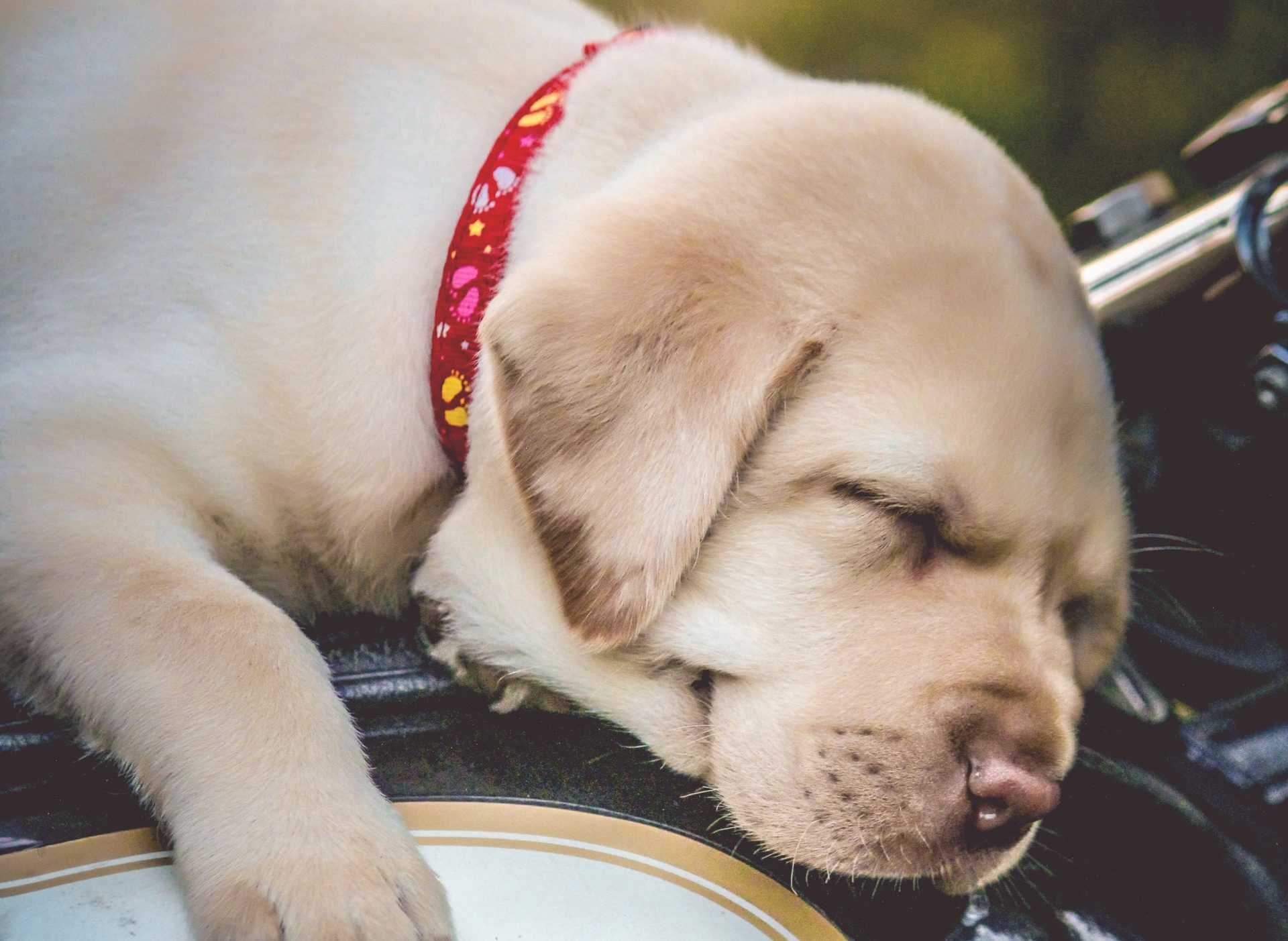
So now we have established the certain differences which make Labs a little different to train than your ‘average’ hound, let’s now take a look at a few of the most effective ways to address these.
Before we get started there is one further question to consider.
When should we start training our Lab puppy?
There is not an accepted consensus of when this ought to be, and largely this comes down to what you consider ‘training’.
There are those who like to start socializing as early start at 8 weeks, while others adopt the approach that it’s best to allow a puppy to ‘be a puppy’ and start at 6 months.
Clearly, that is quite a difference!
But strange as it may sound the six-month approach is perhaps the toughest on the dog.
This approach is considered by some as outdated as it required your dog to have matured and grown strong enough for hard physical training (and the use of heavy restraints to coach them which would be too much for a pup).
So while your puppy will enjoy six months of fun and freedom, they will be in for quite a shock once they have physically matured.
So it’s best to begin training much earlier than this.
While it can be extremely frustrating to coach a wilful Lab puppy that is only a couple of months old, after eight weeks with its litter it should have learned many useful lessons already.
These include bite inhibition, play, discipline & feeding (from Mommy), and pack order.
Importantly, their brains will also be developed enough to begin understanding basic instructions.
So from the moment you collect your Lab puppy and take them home. You are their pack leader.
Make no mistake, Lab pups are incredibly observant and will be watching your behavior and interactions around the clock.
So it is down to you to be the loving boss, as well as their demanding coach from the very start.
Discover How To Train Your Puppy The Easy Way? Click Here To Access Over 250 Expert Puppy Training Videos
Teaching Your Lab Its Name
The first place to start is by having your Lab puppy respond appropriately to its name being called.
When your pup hears its name it ought to spark excitement and positivity, but never anything negative.
Should you catch your dog misbehaving do not shout its name!
Instead, use another word for scolding – “Stop” said firmly but not at shouting tone is perhaps the easiest example.
The point is to prevent confusion so that when you say “Fido” he immediately stops whatever it is doing and obediently waits for your next command.
Here are the steps you need to follow…
#1 – Getting Their Attention.
Make sure it’s just you and your puppy in the room.
Neither of you should be tired or distracted.
Call his name in a happy voice and see if it stops to pay attention.
If not, make a gentle clap then say the name again.
Keep repeating this until your pup stops whatever he’s doing when it hears the name without the clap.
This can take anywhere from a couple of attempts, to sometimes hundreds.
#2 – Reward!
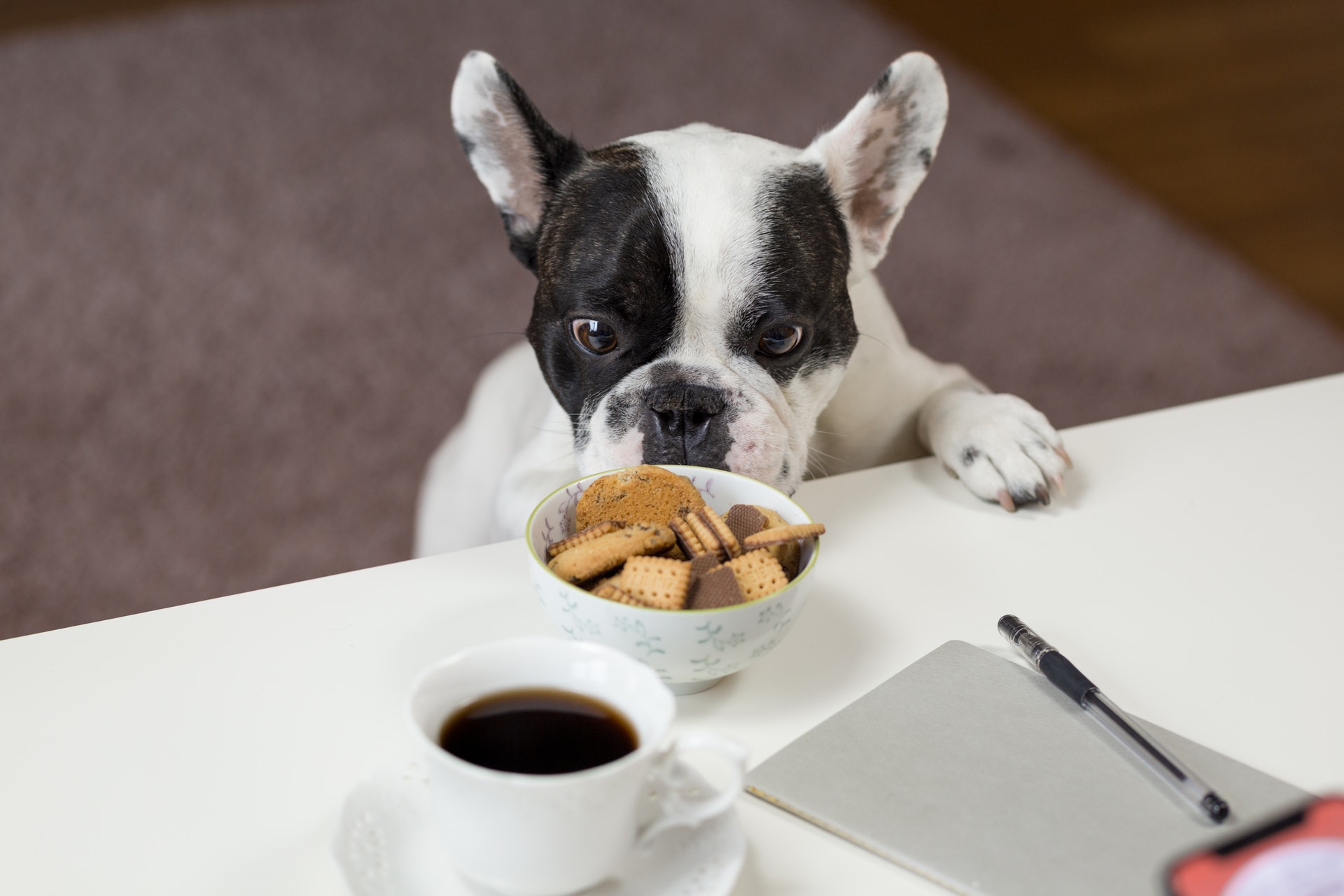 When your puppy starts to pay you total attention when he hears his name, give him a tasty treat and some happy vocal encouragement.
When your puppy starts to pay you total attention when he hears his name, give him a tasty treat and some happy vocal encouragement.
This is often referred to as positive reinforcement, and you’ll be using this a lot when training your Lab!
Now lose their attention and try it again.
Repeating over and over again until it becomes second nature.
#3 – Change Location
Try doing this together in different rooms, to begin with.
Once your pup feels comfortable responding automatically wherever it is, now try it without a line of sight.
Walk into a different room and call their name (keep using that happy voice and reward when/if they come).
Repeat with different locations throughout the house.
#4 – Increase The Attention Time Before A Reward
Obviously, you don’t want your pup to associate its name purely with snacks.
So now try and stretch out the time – in seconds – before it loses attention.
5 seconds is a good target during puppyhood, but if they can only manage two or three then use that for the rest of the session and try again the next day.
Remember Labs are smart and will learn this over time.
Patience is the key.
#5 – Add Some Distractions
Once your lab can hold for five seconds in a silent environment, it’s time to make it trickier by adding background noise and activities.
Have other people in the room, put the TV on – anything that adds some distraction and then try to call your puppy over.
This can be the most difficult stage so reward (with the finest treats) immediately to begin with and work back up to five seconds gradually.
#6 – Head Outside!
The final step should be enclosed yard training.
There is plenty of attention distracting sights, sounds, and scents which you have little control over outside.
Keep calling and rewarding your dog in the same style as you did inside.
#7 – Constant Reinforcement
Repetition is the key.
Incorporate aspects of this training at least once a day during the whole of puppyhood.
It will become second nature if performed properly and make further developing your Lab so much easier, as well as reinforce their bond with you as their leader/source of fun and food.
Labs are incredibly food orientated dogs so use this to your advantage.
Discover How To Train Your Puppy The Easy Way? Click Here To Access Over 250 Expert Puppy Training Videos
Leash & Collar Training For Lab Puppies
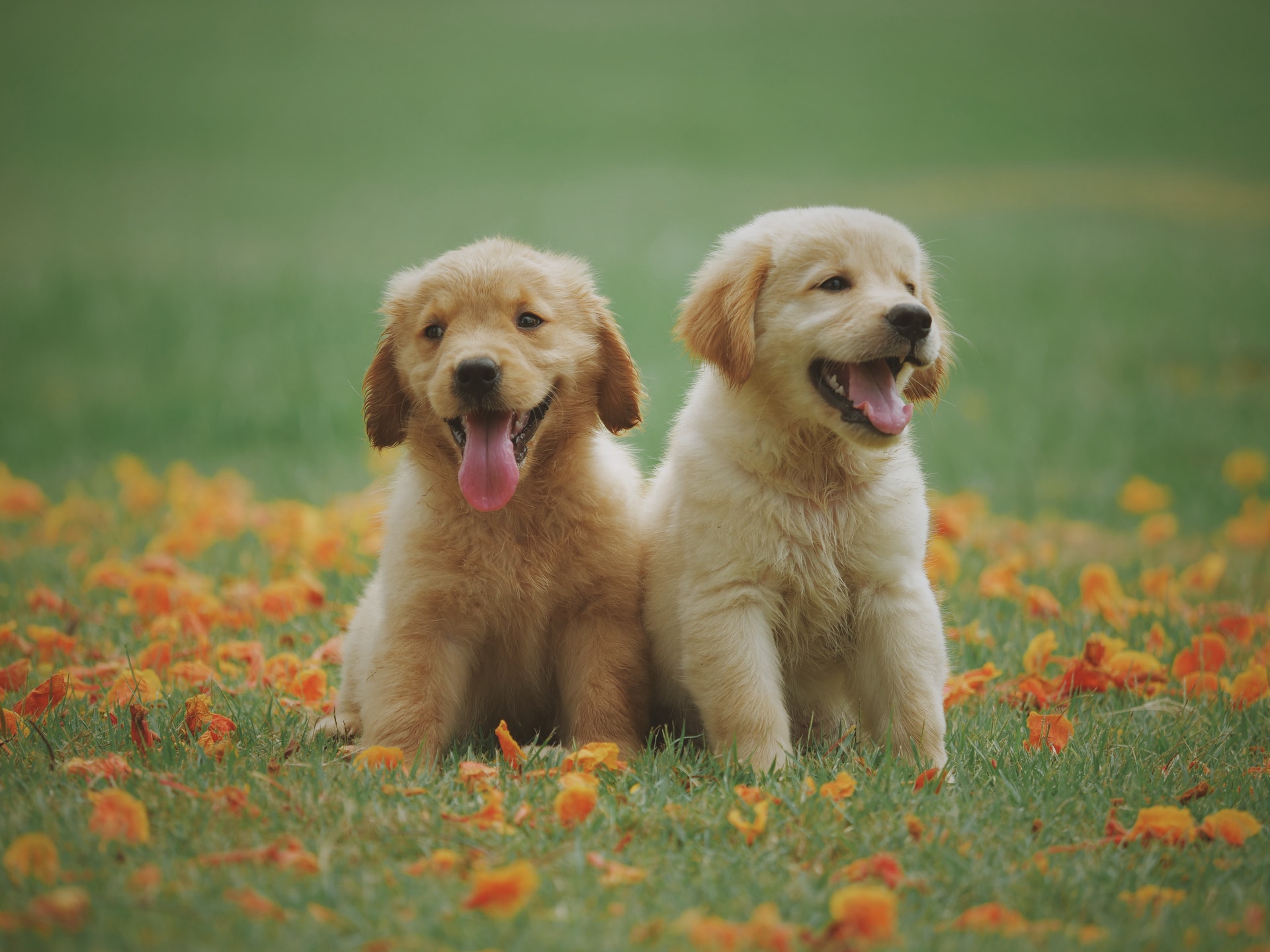
It is sensible to hold back from this training for the first 3/4 days after your puppy arrives home.
After all, your puppy has to get used to living with a new family and become familiar with the home.
House training (to follow below) needn’t require a leash at this stage as they’re light enough to be carried to the yard.
Effective leash training can be conducted indoors between weeks 8-10.
Some Lab puppies will become used to it (no pawing, straining etc) and walking alongside you within a few hours.
Others may take longer but don’t worry this is perfectly normal.
Only consider it a problem if after a fortnight of regular practice they are still uncomfortable when on the leash.
If this is the case then consider the following advice.
#1 – Is The Collar Suitable?
Do not use a collar which you intend your pup to grow into.
Adult collars are simply too heavy and will be uncomfortable/stress-inducing for pups.
Instead, look for wide and lightweight collars designed specifically for puppies.
Thin collars will apply too harsh a pressure on the throat as they strain – once again making them extra stressed out!
Finally, stay away from buckles and use clips which are much quicker to fasten up.
#2 – Positive Reinforcement
Effective training requires patience and positive reinforcement.
So remember to keep calm.
If your puppy keeps chewing on the leash then use a safe anti-chew pet spray (or a splash of diluted Tabasco sauce).
And should they keep wrapping the leash around your legs, then just use a shorter one or wrap it around your fist.
#3 – Start Slowly
To begin with, only attach the collar for short periods.
Preferably for an hour 2-3 times a day.
Gradually extend this over a couple of weeks until it becomes second nature, but keep an eye out for any signs that it is making your puppy uncomfortable.
Ultimately, it is your call whether or not to remove it, but whatever you do, make sure not to react in any way.
Stay calm and silent (don’t laugh) if at any time you take the collar off.
And oh yeah, it is best only to remove the collar when the dog is calm.
Offer rewards when removing the collar when the pup is chilled out, but not when he’s making a fuss.
Discover How To Train Your Puppy The Easy Way? Click Here To Access Over 250 Expert Puppy Training Videos
#4 – Let You Lab Lead The Leash
Initially just sit and let your pup become used to having a leash.
Just allowing him to pace around at his own speed is a great way to start.
Move on to allowing it to walk you around the house.
Introduce stop-start once it is clear that your dog is comfortable, reinforce his good behavior constantly.
Repetition is once again the key.
Try attaching the collar and going for household walkies several times a day. In the overwhelming majority of cases, it will quickly become second nature.
Leash training is almost always going to involve your puppy straining for the first few times.
That’s why it is important not to give an inch!
Do not pull your puppy towards you or verbally scold, just let him figure out that straining is going to cause discomfort and eventually he will stop it.
Repeat this with every session of leash training at least two or three times.
Once again, he’ll learn quickly that it’s best to stick close and follow your lead. Get this right and any further training will be far easier.
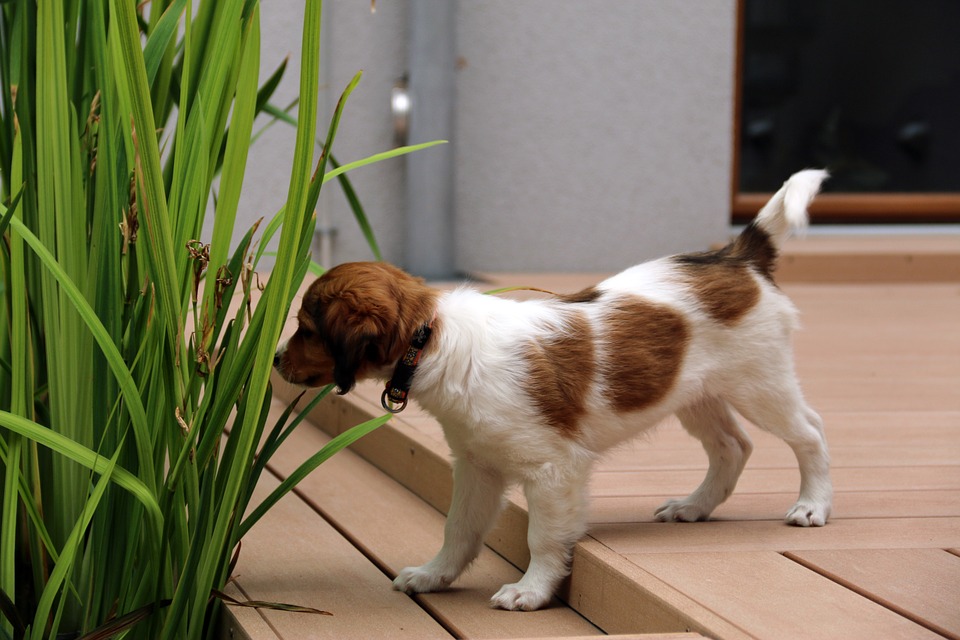
House Training Your Lab Puppy
Perhaps the most important consideration from day one is ensuring that your new family member understands where is appropriate to conduct its essential business.
Now, there are many ways to do this, but what’s important to understand is that what you teach the puppy is what it will do.
So, if you want it to only use the yard then there are specific ways to do this.
If providing a litter tray, there are other ways.
And so on for any other method you can think of.
One decision that is worth taking before you collect your puppy is whether or not you plan on using a crate.
These are not as popular as they once were, but for house training, they can be useful especially if your puppy cannot be supervised throughout the day.
If you prefer to coach your puppy to use outside, then it will require constant supervision for the first few weeks – and be prepared for accidents to happen.
When they do, just keep cool and work towards correcting it.
Routine is essential – open up the yard the moment you get up in the morning, come home from work, and before bedtime.
An effective guide to follow…
#1 – Build A Routine
Puppies need to ‘go’ several times a day.
To prevent them from just going everywhere they like, take them to an approved outside toilet spot every couple of hours.
Familiarity will become ingrained sooner than you think, and after a few weeks, they will be able to do so on their own (in an enclosed yard) or on a leash.
#2 – Paper Training
Of course, you will not want to be getting up three times a night, so paper training is a commonly used method for when you are not available.
Find an appropriate space and place the down paper in a good sized litter tray.
Introduce your Lab puppy to this by using a small amount of their waste to ‘scent’ it as an approved pooping location.
#3 – Be Patient
Give your puppy time to figure out that it’s toilet time.
Do not play any games before they have gone, just gently encourage them.
If after 5 minutes they haven’t gone, then take them back inside and try again in an hour while keeping a close eye!
It is a good idea to ‘limit their world’ to a couple of rooms until they have become used to their toilet routine.
Not only does it make tidying up accidents easier, but it is also more effective for monitoring them.
#4 – If they squat…
Grab them right away and take them to their toilet spot.
Do not scold them – it is your fault for not noticing that they needed to go in the first place!
But fret not, because as they age, they will become much better at holding in for their scheduled time.
Signs that they need to go are…
- Sniffing the floor
- Looking restless/uncomfortable
- Circling
- Sneaking towards a familiar ‘accident’ room
#5 – It gets easier
Labs will not develop strong bladder control until they are several months old (much like humans!).
Some will learn quicker than others, just understand that there are going to be routine accidents.
Especially first thing in the morning.
It can be hard work keeping your cool, but perseverance and patience are the only way to go.
Scolding your puppy will just make it scared and uncomfortable about going in front of you.
Making accidents much more likely.
Final Thoughts On How To Train A Lab Puppy

Labradors are wonderful dogs, but just be aware that they can be a little tricky when it comes to getting the basic training covered.
Once you have a responsive puppy they will become much more malleable to obeying house rules and disciplined walking.
Get these three principles right over the first 2/3 months and you’re well set to commence more detailed command training before they are even close to reaching adolescence.
And remember that effective early socialization is the absolute key to fostering a real bond and affection between your Lab and yourself.
These are smart, intuitive and incredibly affectionate dogs when properly cared for.
So trying as it may be at times, stick at it, and over the next few months, you’ll enjoy many happy years with a friend for life.
Do you have any thoughts on how to train a lab puppy? Let me know in the comments below…
Discover How To Train Your Puppy The Easy Way? Click Here To Access Over 250 Expert Puppy Training Videos